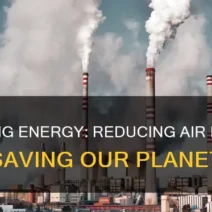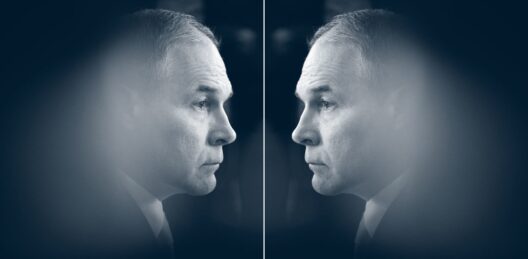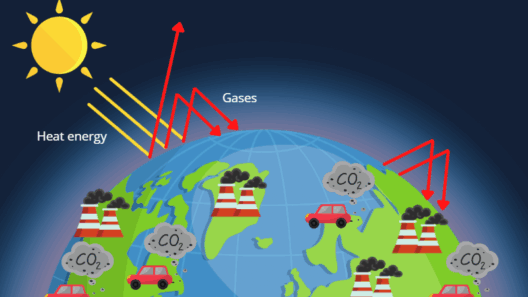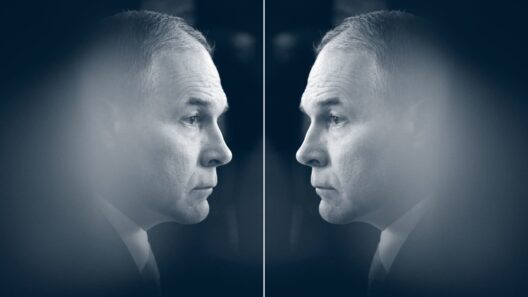Global warming is often associated with rising temperatures and extreme heat. However, evidence suggests that it can also contribute to an increase in the frequency and severity of extreme cold events. This apparent contradiction has spurred ongoing debate among climatologists, meteorologists, and environmentalists. Understanding the intricate dynamics between global warming and extreme cold is crucial in unpacking this climate conundrum.
At the heart of this discussion lies the intricacies of the polar vortex—a large area of low pressure and cold air surrounding the Earth’s poles. The polar vortex is a complex system that normally remains stable, keeping frigid air confined to the Arctic region. However, rising global temperatures can disrupt this stability. As the globe warms, particularly in the Arctic, phenomena such as the weakening of the polar vortex can occur, allowing bursts of cold air to penetrate further south than they ordinarily would. This results in unprecedented cold snaps in regions that are usually temperate.
The Arctic is warming at a pace nearly twice as fast as the global average. This disproportionate increase in temperature leads to notable changes in atmospheric circulation patterns. When the polar vortex weakens, the cold air that accumulates at the poles can spill outwards, triggering extreme winter weather events across the mid-latitudes. This phenomenon can result in dramatic drops in temperature and severe winter storm activity, creating the paradox of experiencing extreme cold in a warming world.
In addition to the polar vortex, other atmospheric conditions contribute to this phenomenon. The jet stream, a fast-flowing air current in the atmosphere, plays a pivotal role in weather patterns. As the Arctic warms, it disrupts the typical zonal flow of the jet stream, which ordinarily acts as a barrier to keep cold Arctic air contained. A weakened jet stream can result in a more wavy and erratic pattern, causing it to dip further south and bringing with it the winter chill. Such fluctuations exemplify how the warming climate can lead to unexpected increases in cold temperatures.
Furthermore, changes in sea ice cover in the Arctic have implications for both temperature and weather patterns. The reduction in sea ice alters the albedo effect—whereby ice and snow reflect sunlight, maintaining cooler temperatures. With less ice to reflect sunlight, more solar energy is absorbed by land and ocean surfaces, further contributing to warming. Yet paradoxically, this disruption can also lead to more frequent and severe cold spells during the winter, as the destabilized polar regions send surges of cold air toward lower latitudes.
Another important aspect of this discussion is the influence of feedback mechanisms within the climate system. As the planet warms, the melting of glaciers and permafrost releases stored greenhouse gases, such as methane and carbon dioxide, into the atmosphere. This exacerbates climate change, creating a feedback loop that can result in extreme weather, including severe winter conditions. The interaction between warming temperatures, greenhouse gas emissions, and the resulting climatic shifts creates a delicate balance that can lead to both heat extremes and cold extremes manifesting within a short timeframe.
Additionally, climate change exacerbates existing meteorological phenomena. Weather patterns are becoming more erratic and unpredictable, making it increasingly likely that regions unaccustomed to extreme winter conditions will experience them as a consequence of the altered climate system. For instance, many parts of the United States have seen a notable increase in the frequency and intensity of winter storms over the past few decades, attributable to the changing climate dynamics.
Public perception regarding global warming often leans toward the assumption of linear warming with more heat-related events. This misperception can lead to skepticism about the existence of extreme cold events occurring in a warming world. Education and communication are vital in ensuring that the complexities and nuances of climate science are understood by the general population. Addressing these misconceptions is crucial for fostering effective public discourse and mobilizing action against climate change.
It is important to highlight that while extreme cold events can be linked to climate change, the broader implications of global warming are predominantly detrimental. The overarching trends show that global temperatures are indeed rising, leading to a myriad of adverse effects such as increased sea levels, more intense heatwaves, and shifts in ecosystems. While cold outbreaks may challenge the narrative of warming, they do not negate the overwhelming evidence supporting anthropogenic climate change.
Ultimately, the relationship between global warming and extreme cold is a testament to the complexity of earth’s climate systems. Disruptions resulting from a warming planet can lead to unusual weather patterns that include bouts of extreme cold. To properly address and adapt to these climatic shifts, it is paramount to recognize the interconnectivity of these weather phenomena, and the broader implications of climate change as a global urgency.
By fostering a better grasp of these intricate processes, a more informed discourse can emerge, equipping society to confront the challenges posed by climate change. Policymakers, educators, and communities must collaborate to develop holistic strategies for adaptation and mitigation while energizing efforts to combat climate change at all levels. As we continue to witness anomalies in weather patterns, understanding the paradox of cold in a warming world is essential for fostering resilience and promoting sustainable practices.





